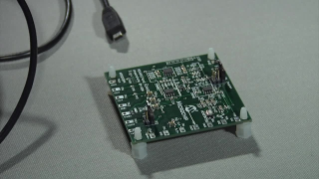Electronica Azi & Microchip Curiosity HPC Development Board
Win a Microchip Curiosity HPC Development Board (DM164136) from Electronica Azi and if you don’t win, receive a 15% off coupon for this board, plus free shipping.
Curiosity HPC is the perfect platform to harness the power of modern 8-bit PIC® Microcontrollers. Its layout and external connections offer unparalleled access to the Core Independent Peripherals (CIPs) available on many newer 8-bit PIC MCUs. These CIPs enable the user to integrate various system functions onto a single MCU, simplifying the design and keeping system power consumption and BOM cost low.
This board provides flexibility for experimentation through an application header with ground (GND) and supply voltage (VDD) connections. It also includes a set of indication LEDs, push button switches, and a variable potentiometer. Additionally, it features two mikroBUS™ headers to accommodate a variety of plug-in Click™ Boards that can be used in application development. All connections to the mikroBUS headers, LEDs, switches and potentiometer are labelled with the microcontroller port name for ease of programming. The full pin breakout of the microcontroller is provided to expand the flexibility of the Curiosity HPC Development Board.
The Curiosity HPC Development Board can also evaluate and support the Microchip PIC18 Q84 Family, the first PIC18 microcontroller family that can be used to transmit and receive data through a CAN FD bus. Accompanied by an extensive array of CIPs that handle a variety of tasks without requiring CPU intervention, Microchip’s PIC18 Q84 family cuts both time and cost when connecting systems to a CAN FD network.
It also includes the following features:
- Accommodates 40- and 28-pin 8-bit microcontrollers
- Fully compatible with the MPLAB® Code Configurator and MPLAB X v3.05 or later




